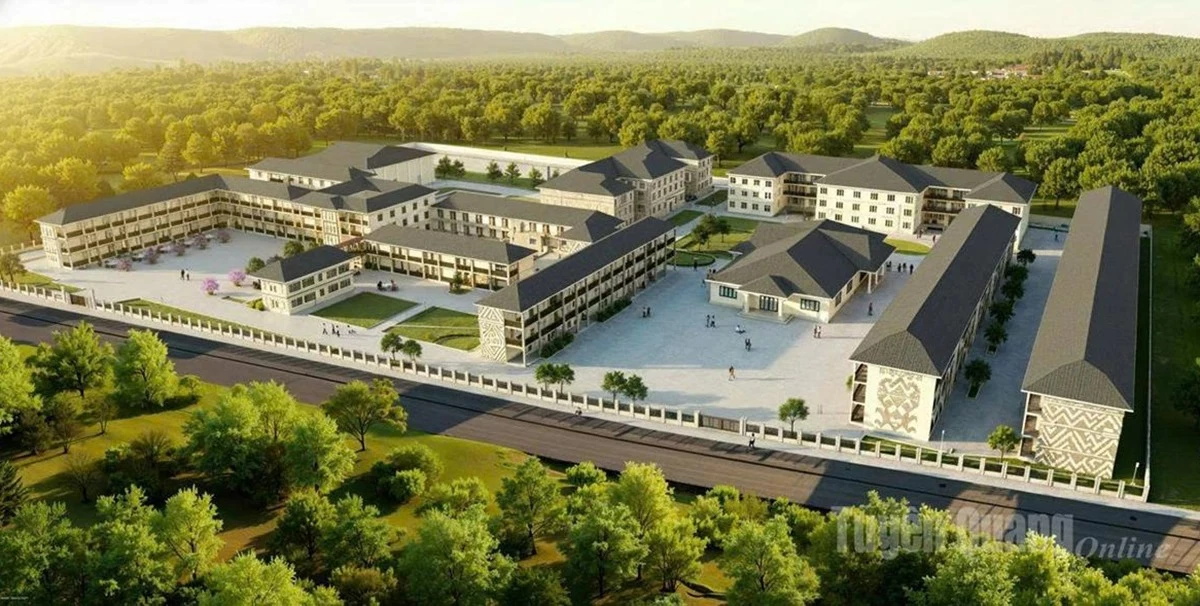Schools at the nation’s frontier
Five new boarding schools for primary and lower secondary education in the border communes of Minh Tan, Pho Bang, Pa Vay Su, Son Vi, and Xin Man were simultaneously inaugurated on the morning of November 9, 2025, highlighting the Party and State’s special attention to education in the country’s frontier regions.
 |
| Model of Minh Tan Primary and Lower Secondary Boarding School. |
On an early winter morning, amid the rolling limestone mountains of these five border communes in Tuyen Quang, the air was filled with the lively sounds of a groundbreaking ceremony. This moment not only marked a new beginning for education in the borderlands but also stirred a deep sense of purpose - the will to build and the aspiration to bring knowledge to the nation’s most challenging areas.
Throughout the country’s development, the Party and State have consistently regarded education as a top national policy. Investing in schools in remote border communes is a central task, crucial for socio-economic development and the implementation of ethnic policies aimed at raising literacy, improving human resources, nurturing local ethnic cadres, and enhancing the material and spiritual lives of border communities, while contributing to national defense and security.
Recognizing this significance, the Politburo approved the plan to invest in boarding schools for primary and lower secondary education in 248 land-border communes. As a first step, 100 schools are scheduled to be newly built or renovated in 2025.
The groundbreaking of the five schools in Minh Tan, Pho Bang, Pa Vay Su, Son Vi, and Xin Man follows a standardized, modern approach while retaining local cultural identity. Each campus will include classrooms, dormitories, teachers’ housing, sports and community spaces, showcasing the political system’s determination to turn policy into action. Together with the previously inaugurated boarding school in the border commune of Thanh Thuy now has six such schools, with a total investment exceeding VND1,000 billion.
In the years ahead, amid the cloud-capped mountains, these new schools will stand as symbols of transformation, hope, and the aspiration for progress among ethnic communities. Each campus will help H’mong, Dao, and Pà Thẻn children come closer to literacy and open a pathway to change their lives through knowledge. From the light of classrooms, dreams will be sparked, ambitions awakened, and a new generation will grow up confident, proactive, and integrated into society, while preserving their cultural heritage.
The boarding schools being constructed meet the central government’s directives: each campus spans 5 to 10 hectares, encompassing learning, dormitories, staff housing, physical training, cultural activities, experiential learning, and agricultural production. School sites are chosen for accessibility, designed with openness, flexibility, diversity, and sensitivity to ethnic culture, local terrain, climate, and natural conditions.
Each border school is more than a place of learning; it is a pillar of trust and a “soft boundary” in the nation’s defense. A secure teaching environment inspires students’ enthusiasm, encourages residents to remain in their villages, and strengthens border stability. Every new school carries a clear message for the future: build schools to protect the land, plant knowledge to build the nation.
Thien Thanh





READER COMMENTS